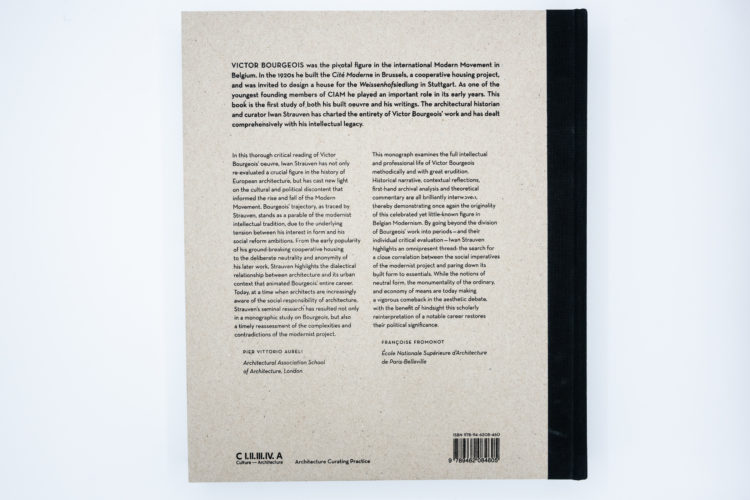











Victor Bourgeois 1897-1962: Modernity, Tradition & Neutrality
Chantal Pattyn’s selection for her storefront.
Bourgeois was barely 25 when he built his Cité Moderne in the outskirts of Brussels. This garden housing was popular in those days. With his radical modernist design and partly due to the network around the magazine 7Arts, founded with his brother Pierre, he managed to end up in the highest regions of the architecture world. Together with Mies Van der Rohe and Le Corbusier, he was asked to participate in the Weissenhofsiedlung in Stuttgart. One of his most exceptional designs is the home and studio for the sculptor Oscar Jespers (1928) in Woluwe-Saint-Lambert. Other well-known buildings are the Postchecque building in Brussels and the Ostend City Hall. The cliché says Bourgeois had become less radical after WWII. In this unique book, Iwan Strauwen explains the fundamental coherence between pre- and post-war oeuvre and a consistency between theory and practice. Read this book and discover this unique architect.
Chantal Pattyn
“Victor Bourgeois (1897–1962) was the leading pioneer of the international Moderne Beweging (modernist movement) in Belgium. He was invited to design a house for the famous Weissenhofsiedlung in Stuttgart in 1927, and between 1928 and 1930 he played an important role in the CIAM (Congrès Internationaux d’Architecture Moderne), the most influential platform for modern architecture and urban design of the twentieth century. This book is the first study of Bourgeois’ built and textual oeuvre. Despite the refinement of his designs and acuteness of his theoretical insights, he was unjustly forgotten as an architect and urban designer.”











- Nai010 Publishers
- Language English
- Release2021
- Pages469
- Format28.6 x 24.5 cm
- ISBN9789462084605












